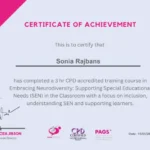Building on the rich history of fishing showcased in The Evolution of Fishing: From Ancient Reels to Modern Games, this article explores how fishing skills have evolved from manual techniques to cutting-edge virtual technologies. As we trace this progression, we see a continuous thread connecting traditional knowledge with innovative tools, shaping the future of angling prowess.
1. The Shift from Manual to Mechanical Casting: Foundations of Skill Development
Historically, fishing relied heavily on manual casting techniques, requiring years of practice to master precision, timing, and feel. Early anglers used simple bamboo or wooden rods, with casting limited by physical strength and technique. Limitations such as inconsistent distance and accuracy hindered efficiency, especially for commercial or large-scale fishing.
The introduction of mechanical devices—such as the reel—revolutionized fishing, allowing anglers to cast farther and more accurately with less physical effort. This transition not only increased catch rates but also shifted skill development from raw physical ability to understanding mechanical operation. Traditional knowledge of rod handling, wind conditions, and bait presentation became essential in optimizing these new tools.
2. The Rise of Technological Innovation in Fishing Equipment
From the earliest simple reels to sophisticated casting systems with multiple bearings and adjustable brakes, technological milestones have dramatically enhanced fishing performance. Advances in materials science—such as lightweight carbon fiber rods and corrosion-resistant composites—have improved durability and responsiveness.
Moreover, design innovations, including baitcasting reels and line management systems, have reduced backlash and improved casting precision. These innovations have shortened the learning curve for beginners, enabling new anglers to acquire effective casting skills more rapidly than in the past.
| Technological Milestone | Impact on Skills |
|---|---|
| Introduction of baitcasting reels | Enhanced control and precision, reducing physical fatigue |
| Carbon fiber rods | Lighter, stronger, easier to handle for extended periods |
| Electronic line counters | Improved distance control and consistency |
3. Virtual Reality and Augmented Reality: Redefining Skill Acquisition
In recent years, virtual reality (VR) and augmented reality (AR) have emerged as transformative tools for fishing education. VR environments simulate diverse fishing conditions—rivers, lakes, or saltwater—allowing anglers to practice casting in a risk-free, controlled setting. Such immersive experiences help develop muscle memory and refine techniques without the constraints of weather or access to water.
Benefits include immediate feedback, customizable difficulty levels, and the ability to repeat specific scenarios until mastery is achieved. For example, a VR system can mimic the resistance of different bait weights or simulate wind conditions, providing a realistic training platform that accelerates skill development.
“Virtual training bridges the gap between theoretical knowledge and practical execution, offering a scalable solution for anglers worldwide.”
However, virtual training has limitations, notably the absence of tactile feedback and real-world unpredictability. While VR can significantly enhance initial learning, it cannot fully replace hands-on experience on actual water, where factors like water currents and fish behavior introduce additional complexity.
4. Digital Platforms and Community Engagement in Skill Development
The digital age has democratized fishing education through platforms hosting tutorials, forums, and competitive events. YouTube channels and online courses allow anglers to learn from experts worldwide, often providing step-by-step demonstrations of casting techniques and troubleshooting tips.
Gamification has further transformed skill acquisition, turning practice into engaging challenges or virtual tournaments. For instance, apps that score accuracy or distance promote friendly competition, motivating learners to improve their technique continually.
Social media and streaming platforms like Twitch or Instagram serve as dynamic channels for real-time feedback, sharing innovative methods, and fostering global communities. These interactions accelerate knowledge exchange and inspire hybrid training methods combining virtual and physical practice.
5. The Future of Casting Skills: From Physical to Virtual and Beyond
Emerging technologies such as haptic feedback devices promise to simulate tactile sensations like the feel of a fish strike or line tension, further bridging the gap between virtual and real experiences. Artificial intelligence (AI) coaching systems can analyze a user’s casting motion—using wearable sensors—and provide tailored feedback to optimize technique.
Personalized virtual training programs could adapt to individual skill levels, environmental conditions, and specific goals, making learning more efficient. For example, an AI-powered app might suggest adjustments based on a user’s casting angle or line speed, ensuring continuous improvement.
“The integration of AI and haptic feedback heralds a new era where virtual skills seamlessly translate into real-world mastery.”
Nevertheless, practical considerations such as accessibility, cost, and ensuring ecological responsibility remain critical. Relying solely on virtual skills without real-world application can lead to gaps in adaptability when unexpected conditions arise during actual fishing trips.
6. Bridging Traditional and Virtual: How Old Skills Inform New Technologies
Foundational skills—such as understanding bait presentation, water reading, and line management—remain vital even as virtual tools become prevalent. They serve as the bedrock upon which virtual simulations build more complex scenarios. For example, a seasoned angler’s knowledge of wind direction can enhance virtual training scenarios that mimic real environmental influences.
Hybrid training methods combine physical practice with virtual exercises. An angler might first learn the mechanics through real casting on water, then refine their technique using VR, gradually transitioning skills from virtual to physical and vice versa.
Preserving traditional knowledge ensures that technological advancements complement rather than replace the essence of fishing mastery. As one expert noted, “Technology enhances our skills, but the deep understanding of nature remains timeless.”
7. Returning to the Parent Theme: The Ongoing Evolution of Fishing Skills
Reflecting on the journey from ancient reels to modern virtual tools reveals a continuous evolution rooted in human ingenuity. Modern innovations extend the legacy of traditional fishing, making it more accessible and precise while honoring its historical significance.
The interconnected future promises a synergy of old and new: ancient techniques inform virtual simulations, which in turn inspire innovative physical equipment. This cyclical evolution ensures that fishing remains both a practical skill and a dynamic art form.
Ultimately, the path from manual casting to virtual mastery underscores a fundamental truth: the pursuit of excellence in fishing adapts with technological progress, yet the core passion for connecting with nature endures.
As we embrace these advancements, it is essential to remember that effective skill development combines the wisdom of tradition with the potentials of innovation. Whether through casting a line in a lake or navigating a virtual environment, the journey of mastering fishing skills continues to evolve, promising exciting horizons ahead.





